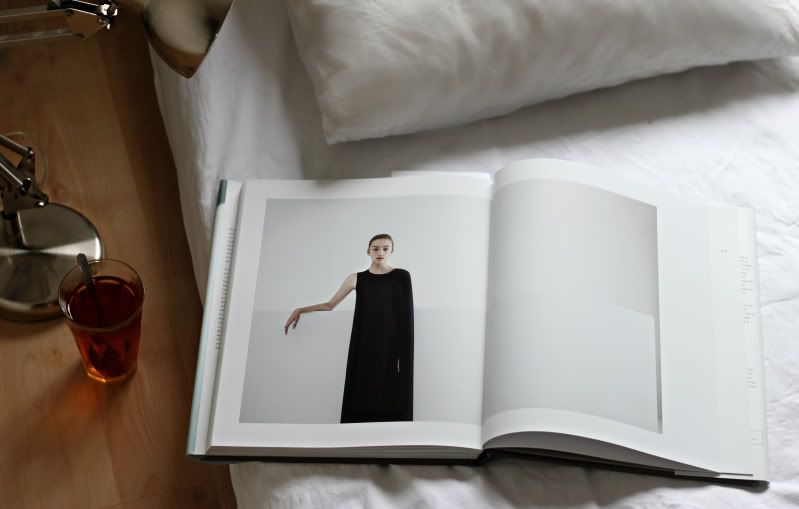
Meet the newest addition on my bookshelf; a very complete resource for references in the minimalist field of fashion. A book that briefly goes through the history of minimalism in art and fashion, and covers all its icons. But also talks about different approaches to minimalist design, it's connections with futurism, realism and functionality. If you´re into this stream in fashion, this book is a real must have. Get it HERE.
______________________________________________________________________
What I found most interesting and want to share with you guys is the theory behind the opposite approaches that designers have towards function and aesthetics.
So here are two fragments of the book that discuss these oposites:
...the fashion theorist Rebecca Arnold suggested "Labels like Donna Karan and Calvin Klein provided the essential wardrobe for those who wished to be viewed as serious and career-minded." These minimal designs and the aesthetics of New York career clothing began to influence the work of avant-garde designers from other fashion industries. While Ladicorbic Zoran, a Yugoslavian immigrant who arrived in the United States in 1971, channeled Halston's work through rigorously basic garments in lavish, if restrained, textiles, Issey Miyake took an interest in the American employ of the working-classfabrics of cotton knit and denim. Miyake ultimately was inspired to look to his own heritage and adapted the quitled sashiko cloths and durable cottons of Japanese laborers' clothes into oversized tops, coats, and loose pants for his lower priced Plantation label. In a 1983 New York Times article, Miyake told June Weir, "I'm working hard on Plantation, my less expensive collection. I see many people wanting comfortable clothes that are easy to care for. So many woman say, 'I'm not interested in fashion. I want clothes that last for years.' I thought that after the T-shirt and the jeans, I could make clothes that are simple, interchangable.... I have only two sizes and half of the styles can be worn by men." When one such ensemble appeared in Vogue in July 1977, the magazine declared, "Issey has the Prototype."
Since the early 1990s the collections of Martin Margiela, Helmut Lang, Hussein Chalayan, Miuccia Prada and Raf Simons have emphasized simplicity of shape and realistic form, focused of aesthetics over function and employed repetitive structures and serial systems or progressions. The principles materialize in the designers' interpretations of deconstruction fashion, defined by Barbara Vinken as the demonstration of constructedness. In 1993 the New York Times columnist Amy Spindler noted that the origins of the deconstructed entity in the literary critisism of the French philosopher Jacques Derrida and cited the Oxford English Dictionary definition; the act of undoing the construction of a thing. In "Deconstructing Fashion: The Making of Unfinished, Decomposing and Re-Assembing Clothes"(1998), the historian Allison Gill associated the term "deconstruction" in fashion with garments that are unfinished and transparent. Approaching deconstruction through a minimal lens, the moniker encompasses the reduction and exposure of an object's fundamental design in order to highlight construction and rejects the intentional deconstruction or demolition of a garment through tearing or fraying the fabric or pattern or the restructuring of garments through misplaced or reassebled component parts. The garments are unfinished with care for the traditional sewing Techniques.
...Like the minimalists of the 1960s, the deconstructivist designers discussed here have created garments that concentrate on the specifics of form, pattern, and fabric rather than on the garment's essential purpose as body covering. These designs reveal the the various elements and processes of dressmaking and reduce the pattern to its fundamental parts; the subject of each of these designs is the garment itself.
0 comments:
Post a Comment